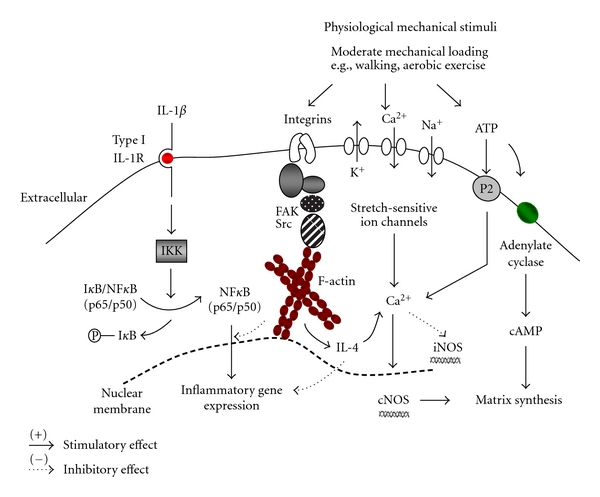Figure 2.

Model depicting the potential protective effects of physiological mechanical stimuli in chondrocytes stimulated with interleukin-1β (IL-1β). Moderate mechanical loading induces a number of signalling cascades which leads to the production of extracellular matrix components. Mechanical loading will stimulate integrin-mediated release of interleukin-4 (IL-4) via actin cytoskeleton, mechanical perturbation of stretch-sensitive calcium or sodium channels, or stimulation of a purinergic pathway involving ATP release and subsequent purinoreceptor (P2) or cAMP activation. The loading-induced calcium may cause instability of inducible nitric oxide synthase (iNOS) mRNA or increase transport of interleukin-4 (IL-4), which blocks catabolic effects. In the presence of IL-1β, mechanical stimuli inhibit cytoplasmic dissociation of NFκB from inhibitory κB-α (IκB-α), which prevents nuclear translocation of the p65/p50 dimers and/or proteolytic degradation of IκB-α by IκB-specific kinases (IKK) or impair IκB-α degradation, thereby switching off transcription for the pro-inflammatory genes.
